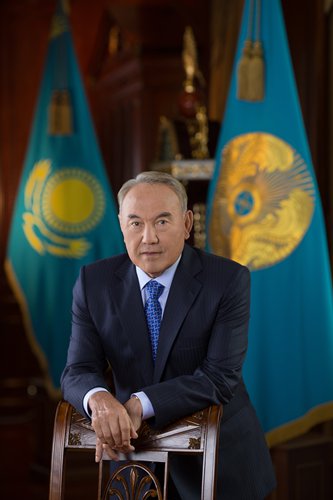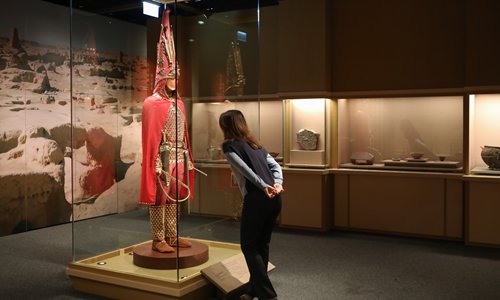Kazakhstan to play significant role in BRI
Global Times
1528299759000

Nursultan Nazarbayev, President of Kazakhstan, who will visit China from Thursday to Sunday to attend the SCO summit in Qingdao, East China's Shandong Province. (Photo: Courtesy of the Embassy of Kazakhstan in Beijing)
Kazakhstani President Nursultan Nazarbayev will pay a state visit to China from Thursday to Sunday at the invitation of Chinese President Xi Jinping. During that time he will attend the 18th Meeting of Council of Heads of States of the Shanghai Cooperation Organization (SCO) summit in Qingdao, East China's Shandong Province.Sharing a more than 1,700-kilometer border with China, Kazakhstan occupies a significant place along both the ancient Silk Road and modern Belt and Road (B&R) routes.
B&R opportunities
As Chinese President Xi Jinping raised the idea of the B&R initiative during a speech at Nazarbayev University in 2013, Kazakhstan was one of the first nations to show support. The nation is also one of the first five member states of the SCO.
"The Belt and Road initiative is what we really welcome, connecting Asia and Europe by railways and highways," Kazakhstan's Foreign Affairs Minister Kairat Abdrakhmanov told the Global Times.
Kazakhstan is China's biggest trade partner in Central Asia and sees the most investment from China among the countries and regions along the B&R routes.
That investment covers oil, metals, infrastructure, agriculture, auto industry, food processing and tourism, among others, according to Abdrakhmanov.
Chinese investment is among the largest in Kazakhstan's oil-rich Mangistau region, its governor Yeraly Tugzhanov told the Global Times. "The Silk Road was initiated centuries ago, while the Belt and Road initiative is a new silk way. I'm sure in the near future that up to 60 percent of trade will go up between China and countries of Central Asia," said Tugzhanov.
China-Kazakhstan relations are very good, which guarantees stability on the Silk Road Economic Belt, Yang Jin, an associate research fellow with the Department of Russia-Eastern Europe-Central Asia Studies of the Chinese Academy of Social Sciences in Beijing, told the Global Times.
Kazakhstan's "Bright Road" initiative, proposed by President Nazarbayev in 2014 to spur economic growth through large-scale investment, can have deep connections with the B&R initiative, said Yang.
There is still potential for more cooperation between China and Kazakhstan on trade, politics and culture, Yang told the Global Times.
"Arrangement on mechanism of finance, like promotion of a free trade zone, can also be considered as future cooperation between the two countries," said Yang.

A visitor studies the "Golden Man," a warrior's costume from a 5th century BC Scythian tomb and an iconic Kazakhstani cultural relic, at the Hong Kong Museum of History on November 28, 2017. (Photo: VCG)
Growing tourismOver the past five years, tourism in Kazakhstan has also seen a surge. "The Belt and Road initiative is about communication. The investments made along the Belt and Road [routes] will also bring tourism. We call it a revival of the ancient Silk Road," said Abdrakhmanov.
Kazakhstan has seen an increasing number of direct flights to cities all around the world.
Roman Vassilenko, Kazakhstan's deputy minister of foreign affairs, told the Global Times that Kazakhstan will offer direct flights from Astana to New York and Astana to Tokyo in 2019.
Arystanbek Mukhamediuly, Kazakhstan's minister of culture and sport, told the Global Times that the country is working on relaxed visa policies in order to better promote tourism.
According to statistics released by China's Ministry of Culture and Tourism, a total of 257,900 Chinese traveled to Kazakhstan in 2016.
Last year, dubbed the China-Kazakhstan Tourism Year, saw 72-hour visa-free entry for Chinese citizens during the Astana EXPO 2017, making it even easier for Chinese to travel to Kazakhstan.
Mobile carriers like China Mobile also offer unlimited mobile data for B&R countries for as low as 19.9 yuan ($3) a day.
Kazakhstan appeals to Chinese tourists for many reasons, including its natural beauty. But a complicated and close cultural relationship with China is prominent among them. There are over 1.59 million people of the Kazakh ethnic group living in Northwest China's Xinjiang Uyghur Autonomous Region, according to the Xinjiang statistics bureau.
"There are many Kazakh people in Xinjiang and almost all of them have relatives in Kazakhstan," said Kazakhstani Foreign Affairs Minister Kairat Abdrakhmanov.
The only problem those people have is dual citizenship, according to Abdrakhmanov. "They want to keep both Chinese and Kazakhstani citizenships, but neither country allows that, so they have to choose one."
New alphabet
In a move to help Kazakhstan integrate into the world economy, President Nazarbayev is looking to make changes to his country's language - abandoning the Cyrillic alphabet for the Latin one.
The initiative will see a gradual shift in written alphabet until 2025, said Arystanbek Mukhamediuly, Kazakhstan's minister of culture and sport.
"The Latin alphabet for us is a window to global heritage. We used the Latin alphabet until 1927, so it's not new for us," Abdrakhmanov said. "We are trying to build up our national identity."
Yang told the Global Times that the Latin alphabet may also aid the former Soviet republic in congealing its own national identity. However, English and Russian are both taught in Kazakhstan's primary and middle schools, he added.
"It is not a problem for Kazakhstan to retain its own traditional culture and open up to the world as well," said Yang.


